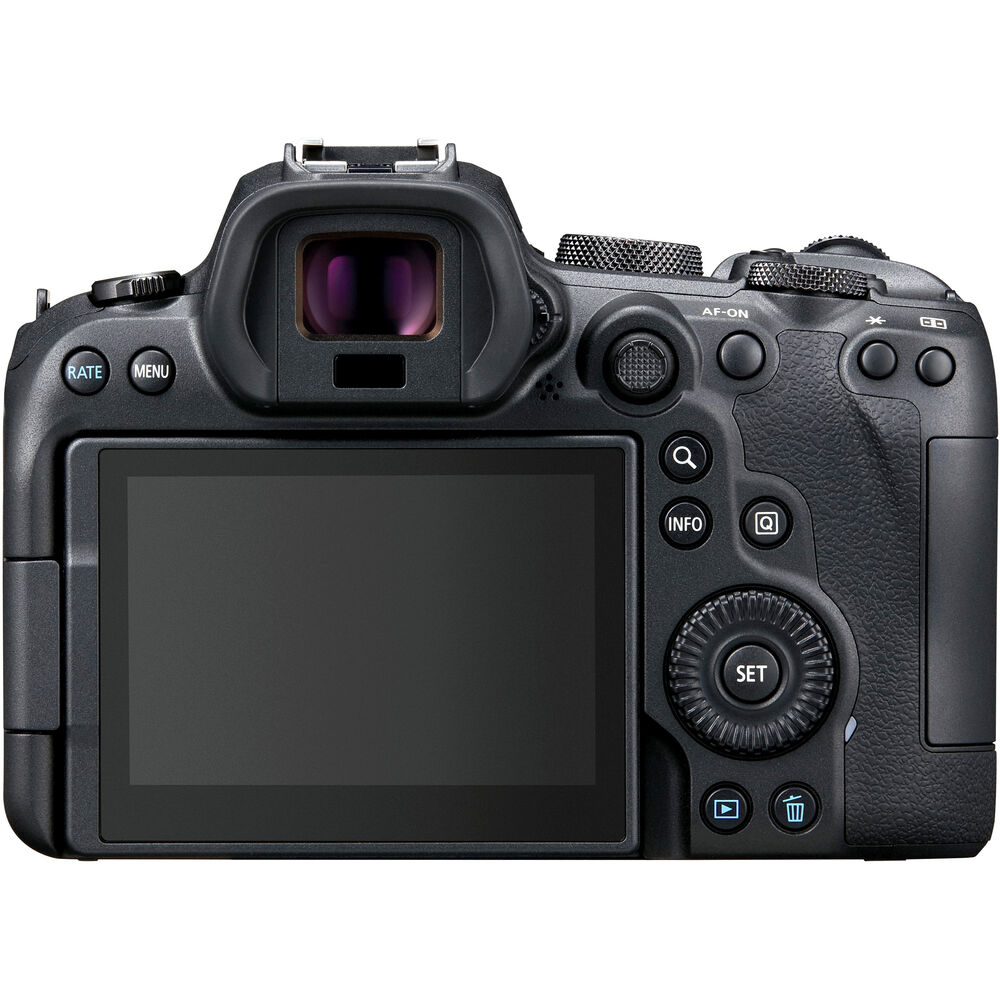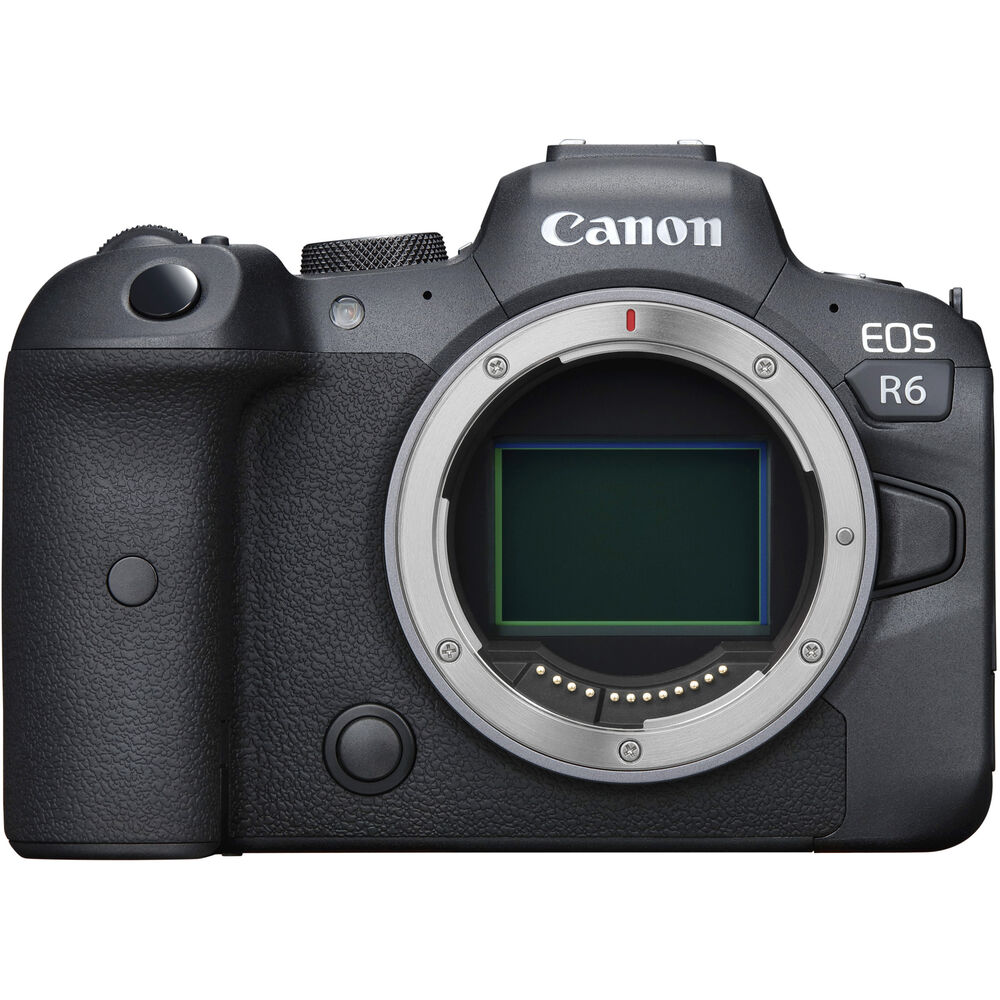First, here are the official overheating numbers from the Canon EOS R6 (Amazon, B&H):
| Resolution | Approx. Shooting time at 23°C/73°F |
|---|---|
| 4K 60p Full frame* | 29 minute 59 second camera limit. Total: 30 minutes. |
| 4K 60p APS-C Crop | Total: 35 minutes |
| 4K 30p Full frame* | Total: 40 minutes |
And here are the official recover times for the R5, which I think will probably be similar (or slightly better) for the R6:
| Format | Waiting period | Max. recording time after waiting period |
|---|---|---|
| 4K 60p | 10 minutes | 10 minutes |
The Canon EOS R6 (Amazon, B&H) is basically the same sensor as the Canon 1D X Mark III, so I’m really shocked why there would be an overheating problem in the first place.
The 1D X doesn’t have active cooling, so I’m a little confused.
I know this is disappointing news to a lot of people, because Canon claims the R6 is top of its class:
Like the EOS R5, the EOS R6 offers powerful movie recording and stills capabilities within a compact body design. At the highest frame rates and resolutions, heat is inevitably generated. We believe the EOS R6 offers the best in class performance, especially for enthusiast photographers and video content creators.
Is that true? Actually, yes. Is there another 4K full frame 10-bit 4:2:2 camera in this price bracket? Here are the only two cameras that come close:
| Feature | Canon EOS R6 | Panasonic S1 | Nikon Z6 |
| Price | $2,499 | $1,998 | $1,847 |
| Max. Frame Rate in 4K | 60 fps | 60 fps | 30 fps |
| Crop in 10-bit Max FPS | 1.06x | 1.5x (1.0x to 30p) | 1.1x |
| Video AF | World class | Below Average | Below Average |
| Recording limit in 4K | 30 minutes | None (but 60 minutes in 60p) | 30 minutes |
| Internal 10-bit 4:2:2 | Yes | Yes | No |
| External RAW | No | Not yet | Yes |
| IBIS | 5 stops | 5.5 stops | 5 stops |
The Canon R6 is more expensive, but it’s just launched. It has almost no crop in 4K and amazing autofocus.
On the other hand the S1 might win the dynamic range battle, and has no limit up to 30p. Need to wait for real world tests to know for sure.
Which one do you pick? It all depends on how badly you need class-leading autofocus.
The small price difference isn’t an issue for professionals earning money for their work. They can make both cameras work.
Let’s make sense of each format to see what we can really use it for.
Can you shoot a short film or feature film with the Canon EOS R6 in 4K?
Definitely. As long as your actors don’t need too many retakes.
E.g., if your scene is 5 minutes long. That’s great. But your actor can only go on for 6 takes before shooting stops for a long period of time. Inexperienced actors often go that long. Scenes might not be that long, though.
This formula should tell you if you can actually use a single Canon EOS R6 for short films or feature films:
Shot length (minutes) x number of takes < 30 minutes
Typically directors immediately move to the next take. During this period the camera is on standby, so will overheat.
The other challenge is lighting. The camera needs to be on for the cinematographer and director to frame and light scenes even before the actors turn up. So the camera is already running for a while.
Canon has a workaround for this) (my comments in red):
Before recording starts, the EOS R5 and EOS R6 display an estimate of the recordable time based on the current camera temperature and the set recording mode.
That’s good. At least you know when things are going sideways.
How can you reduce heat buildup in the EOS R6?
Set Overheat Control function to “ON” (default). When the overheat control function is enabled, the movie size and frame rate are automatically changed while the camera is in standby mode to suppress the rise of the internal temperature.
Between recordings, it is recommended to turn off the camera. Possible but not practical all the time.
Position the camera out of direct sunlight. Not practical all the time.
Use an external fan to dissipate heat. Can you sell me one, Canon? Or should I just forget about recording audio?
Canon Media Alert
Note: Those who are hoping for a fan/cooling solution, pay attention to the word used. Canon recommends an ‘external’ fan.

Overheating limits of 4K on the Canon EOS R6
Up to 29.97 fps (30p)
If you’re using the 4K, the camera downsamples 5.1K for a better 4K image. This is the best 4K image possible on the Canon EOS R6 (Amazon, B&H).
Unfortunately, this mode is limited to 40 minutes (and up to 29.97p). The camera itself places a limitation of 29 minutes and 59 seconds, so assuming at 23°C/73°F you shoot the full length, you can restart shooting immediately for a maximum of 10 minutes, and you have to turn off the camera again.
Canon has not specifically stated how long the recovery time is, but you can expect it to be 10 minutes+.
This is the kind of productions Canon recommends it for:
General purpose.
Canon Media Alert
Very wordy.
This single limit destroys any potential for video shooters thinking of shooting long events or weddings or ceremonies or sports. Or wildlife, where you have to roll and wait for some time. Or interviews, where people talk to 30 minutes or more.
What is strange is there’s no mention of APS-C crop mode here, but it exists in 60p! Maybe they forgot?
50 (50p) and 59.94 fps (60p)
Full frame mode
The camera has a limit of 30 minutes anyway, so you can shoot for 30 minutes before it overheats.
Once the camera overheats, you must wait for a minimum of 10 minutes.
After that you can shoot for about 10 minutes before it shuts down again.
After this, the fastest you can hope for is 10 minutes of shutdown + 10 minutes of recording thereafter.
If you want longer record times, you must switch off the camera for a longer period.
Canon recommends this:
Independent films shooting action or with the option of slow motion with high resolution.
Canon Media Alert
In other words…the same people who would use this camera for 4K 30p.
You could use this for music videos or slow motion in short films, feature films, etc., where the time period is within your control. But if you’re running and gunning and rolling…rolling…rolling…you’ll be rolling without your Canon EOS R6.
APS-C mode
You get 35 minutes, but once the camera overheats, you must wait for a minimum of 10 minutes.
After that you can shoot for about 10 minutes before it shuts down again.
After this, the fastest you can hope for is 10 minutes of shutdown + 10 minutes of recording thereafter.
If you want longer record times, you must switch off the camera for a longer period.
Canon recommends this:
Independent films shooting action at high resolution with the need for additional reach for sports or wildlife or tighter crops.
Canon Media Alert
I can’t imagine wildlife or sports shooters being happy with 30 minutes of rolling. You never know when you’re going to get the shot. Canon is clutching at straws here.
Can you cool the Canon EOS R6 somehow?
The heat dissipation depends on the difference between the camera temperature when it overheats and the ambient temperature. The lower the ambient temperature the faster it will cool.
This means it will cool faster in 23°C than 35°C. You could theoretically cool it faster by storing the camera in ice packs or cold packs like this one. Or carry a mini refrigerator. I use the word ‘theoretically’ with sarcasm because it’s not practical. You need to freeze the packs first, and I can’t imagine why anyone would go through so much trouble other than to prove a point.
You can’t douse the camera with cold water either. The temperature of the sensor is what’s important. You can’t directly impact the heat on the sensor quickly by throwing water on the camera or submerging it in water.
Bottom line
In a nutshell, this is what I can make of it:
4K 60 fps
To be used for slow motion shots in controlled productions, including music videos. You can get through an entire song easily, so this should be doable.
4K 30 fps
To be used for short films or feature films or any controlled production. Can be used for basic videography where you don’t need to roll longer than 30 minutes (with long breaks in between).
To be honest, if you’re looking for a video camera for corporate videos, wildlife, weddings, news, journalism, etc., the Canon EOS R6 (Amazon, B&H) isn’t the right camera for you.
The Canon EOS R6 (Amazon, B&H) is for controlled short film or feature film productions, or for photographers who want high quality video along with their photography.
I hope this is helpful. If I get my hands on an R6 I’ll run comprehensive tests. Stay tuned.

4 replies on “Understanding Overheating in the Canon EOS R6”
With Ninja V will there be unlimited record times.??
Nothing about the combo R6 and Atomos Ninja V?
The camera will be in standby while the Ninja V records. You will be able to switch off the LV and also use the temperature control setting. I think it will run longer with the Ninja V. However, there is no official word from Canon.
…and that tiny HDMI connector worries me from a reliability/ruggedness perspective. If one designs a stills camera with limited video capability, add a robust external port so the weakness can be fortified externally for those that need it.
Awesome summary. What I really want to know is, what are the time limits for just stills photography, if any?